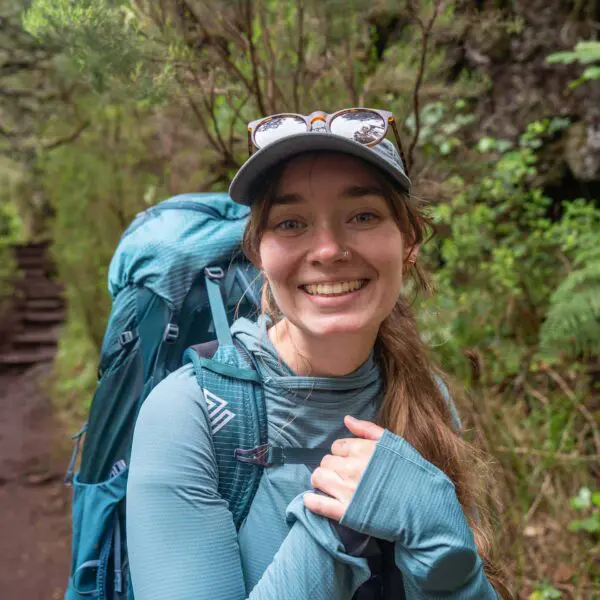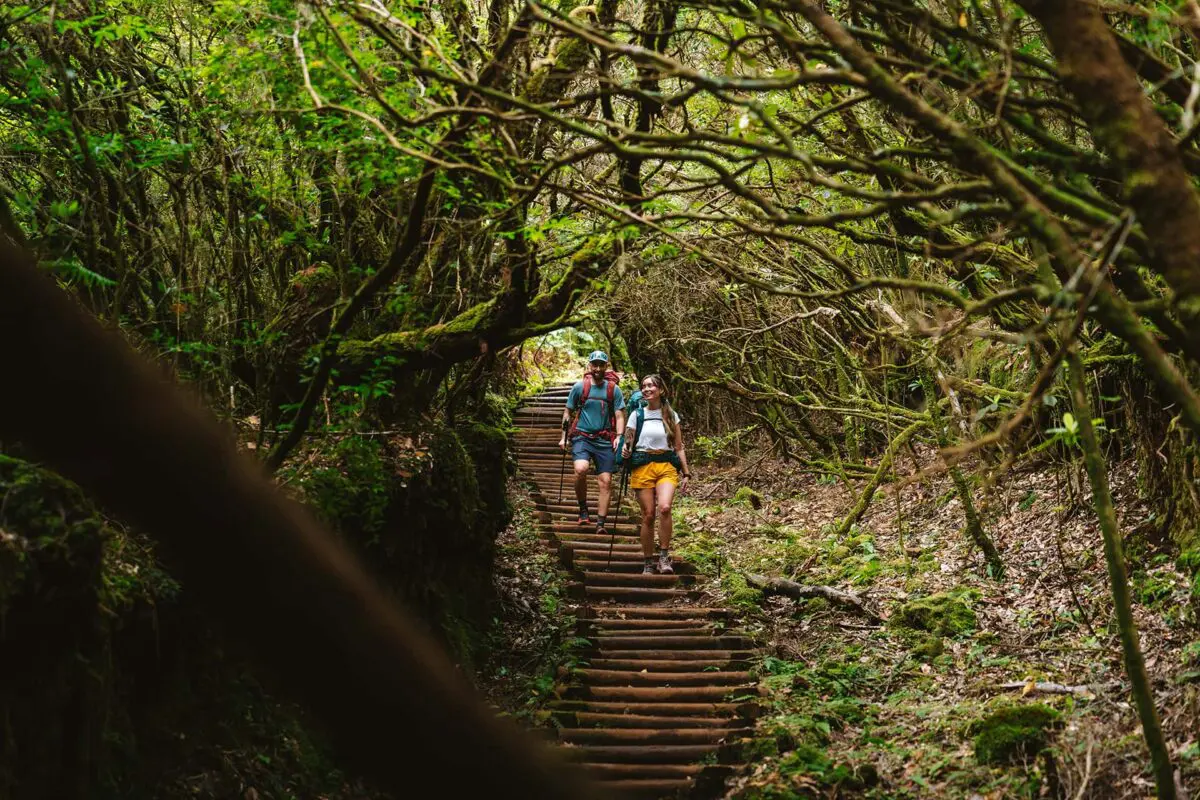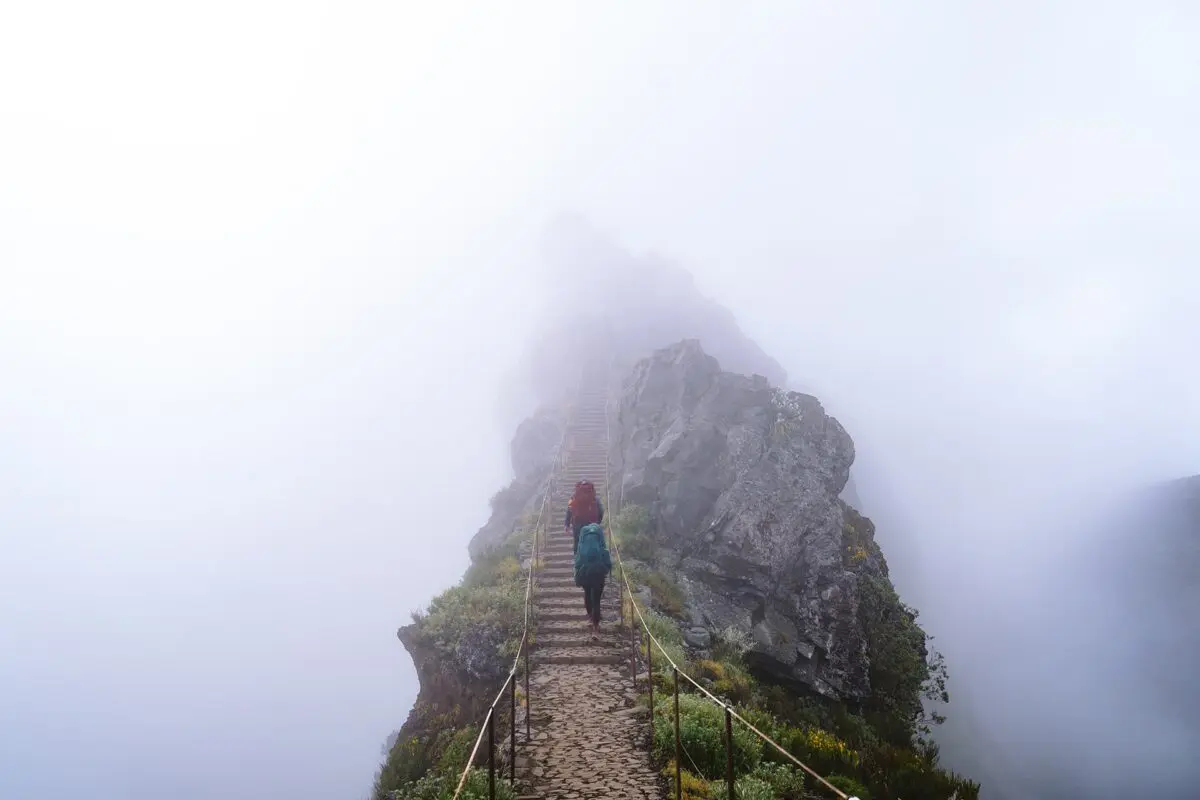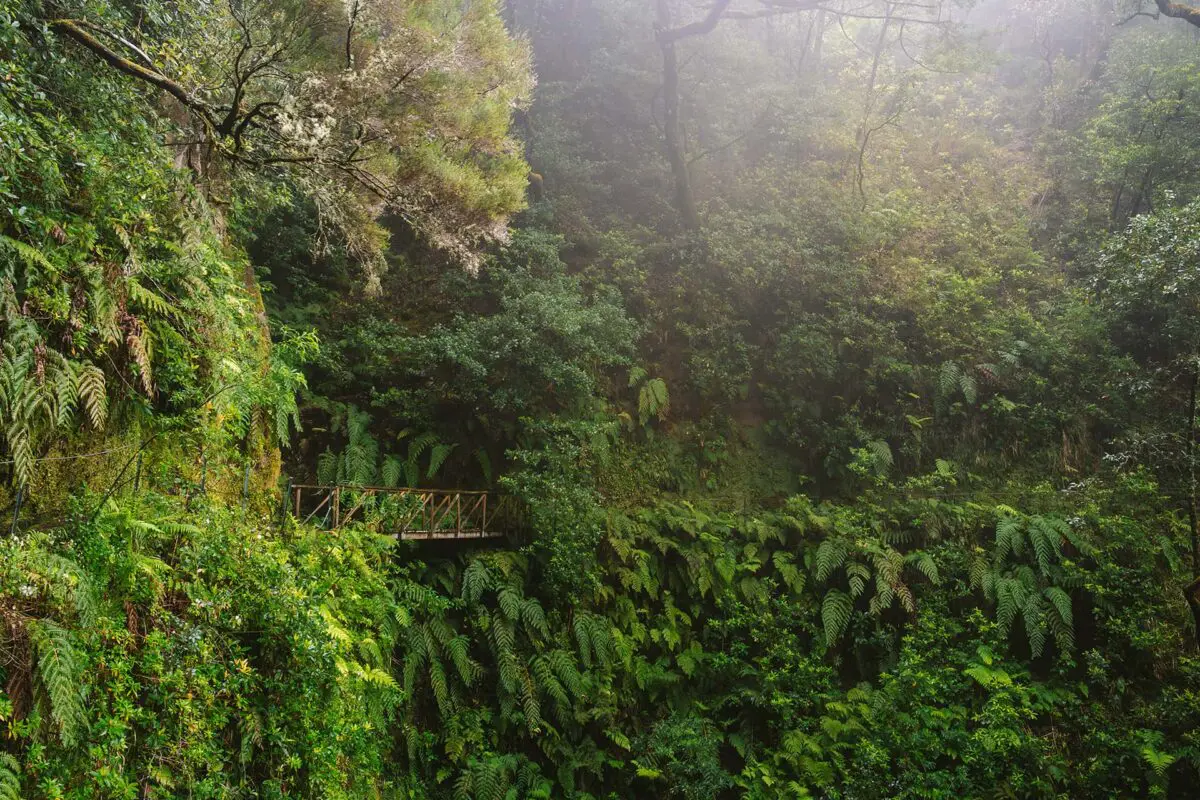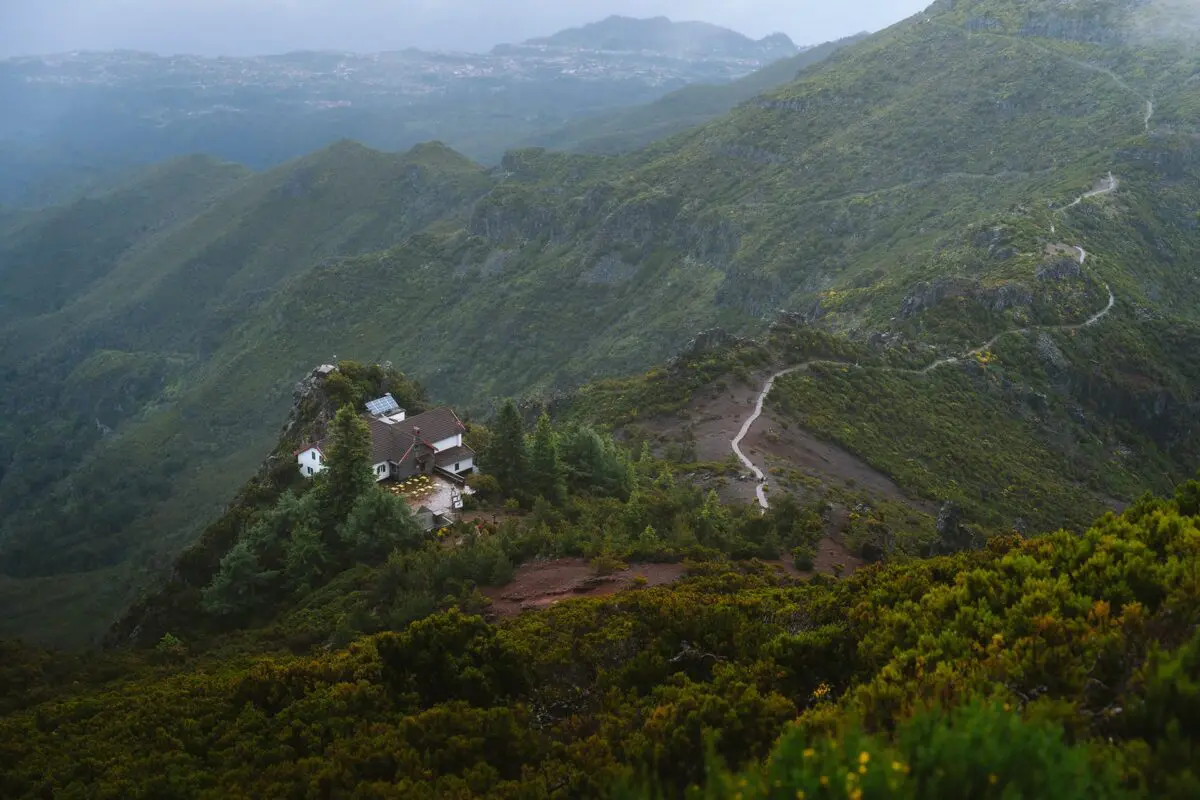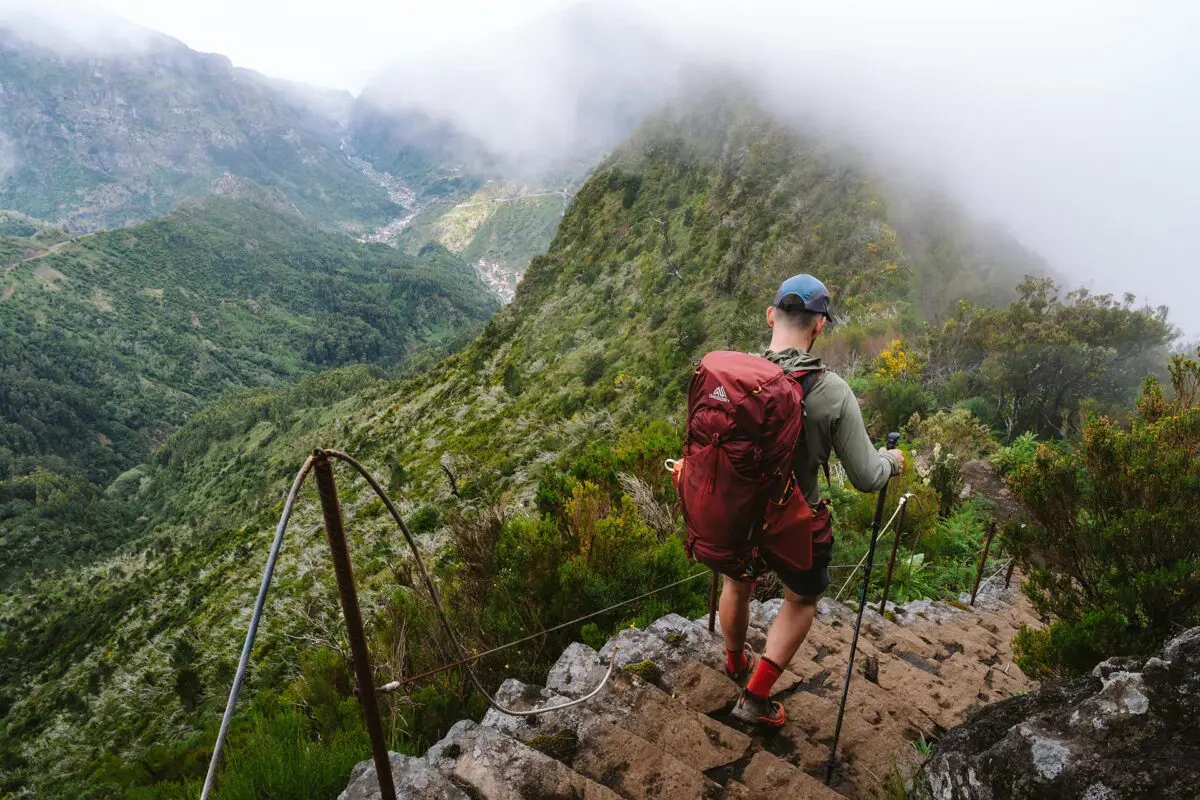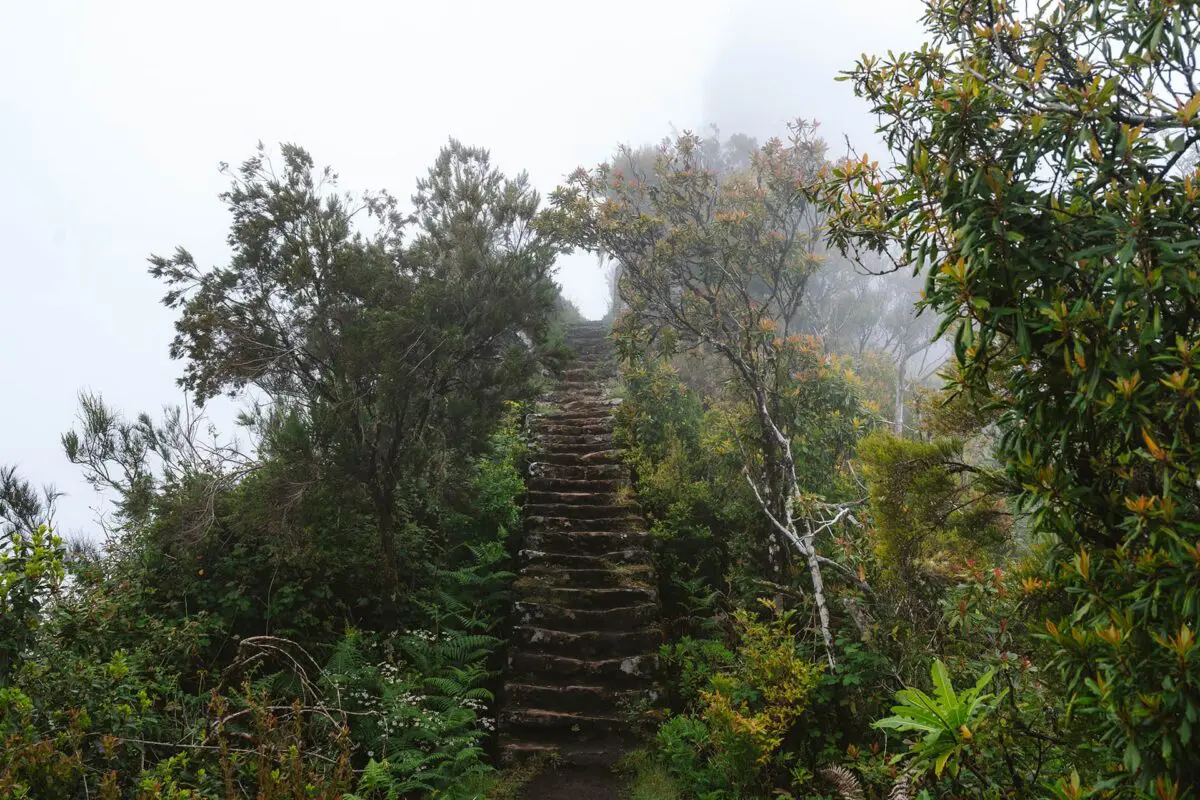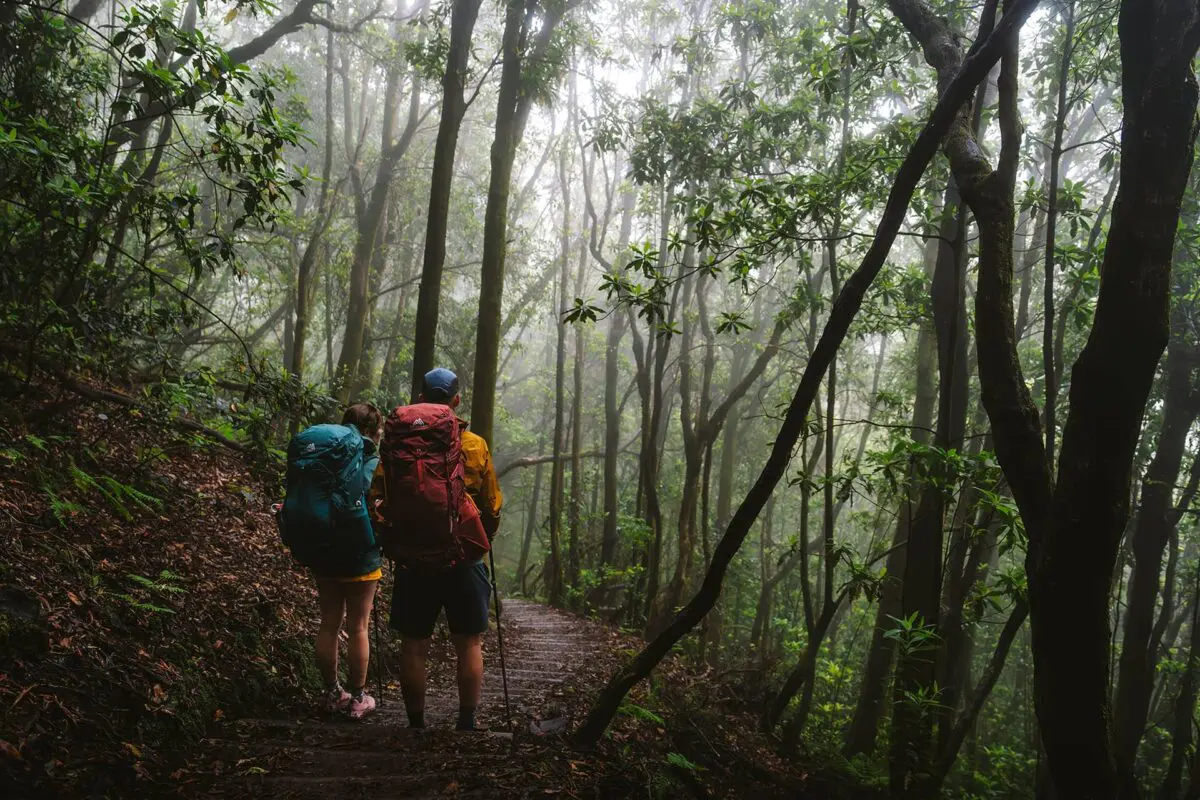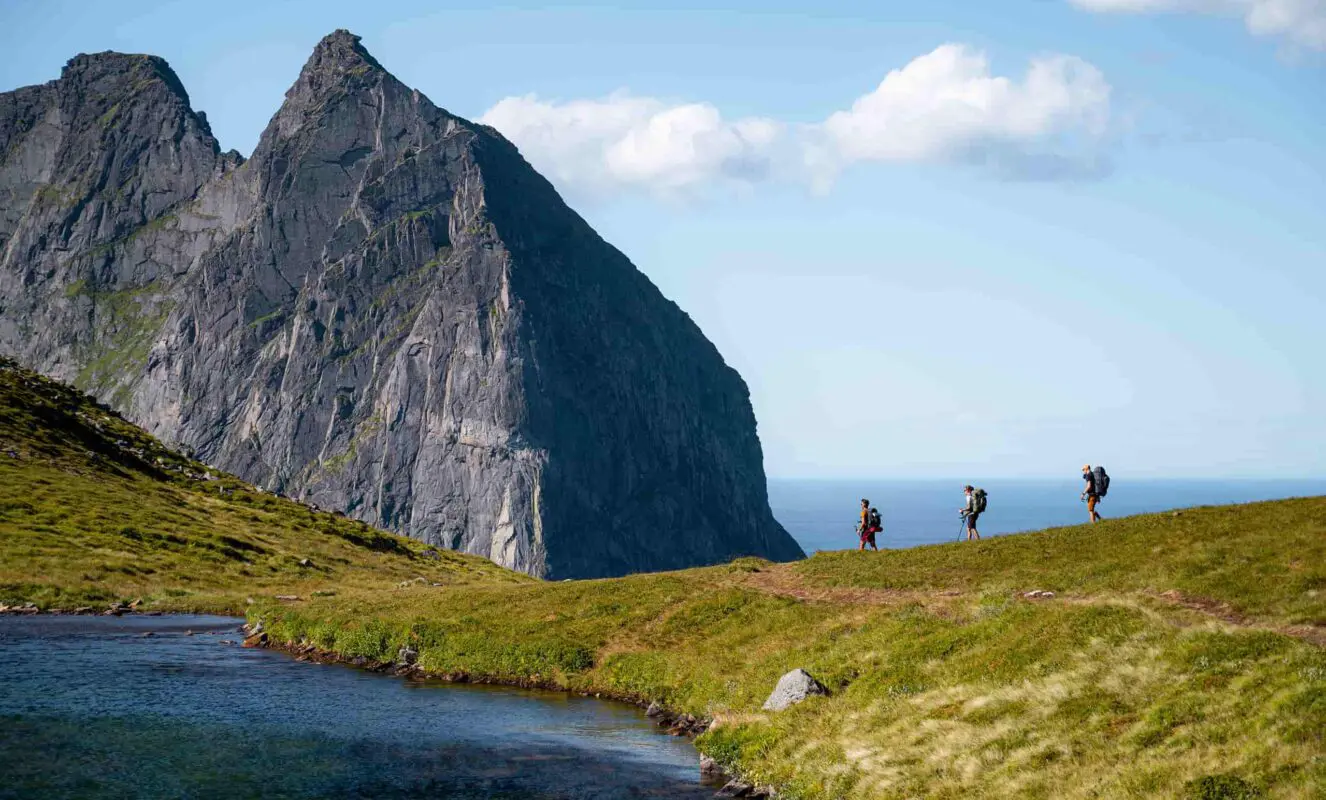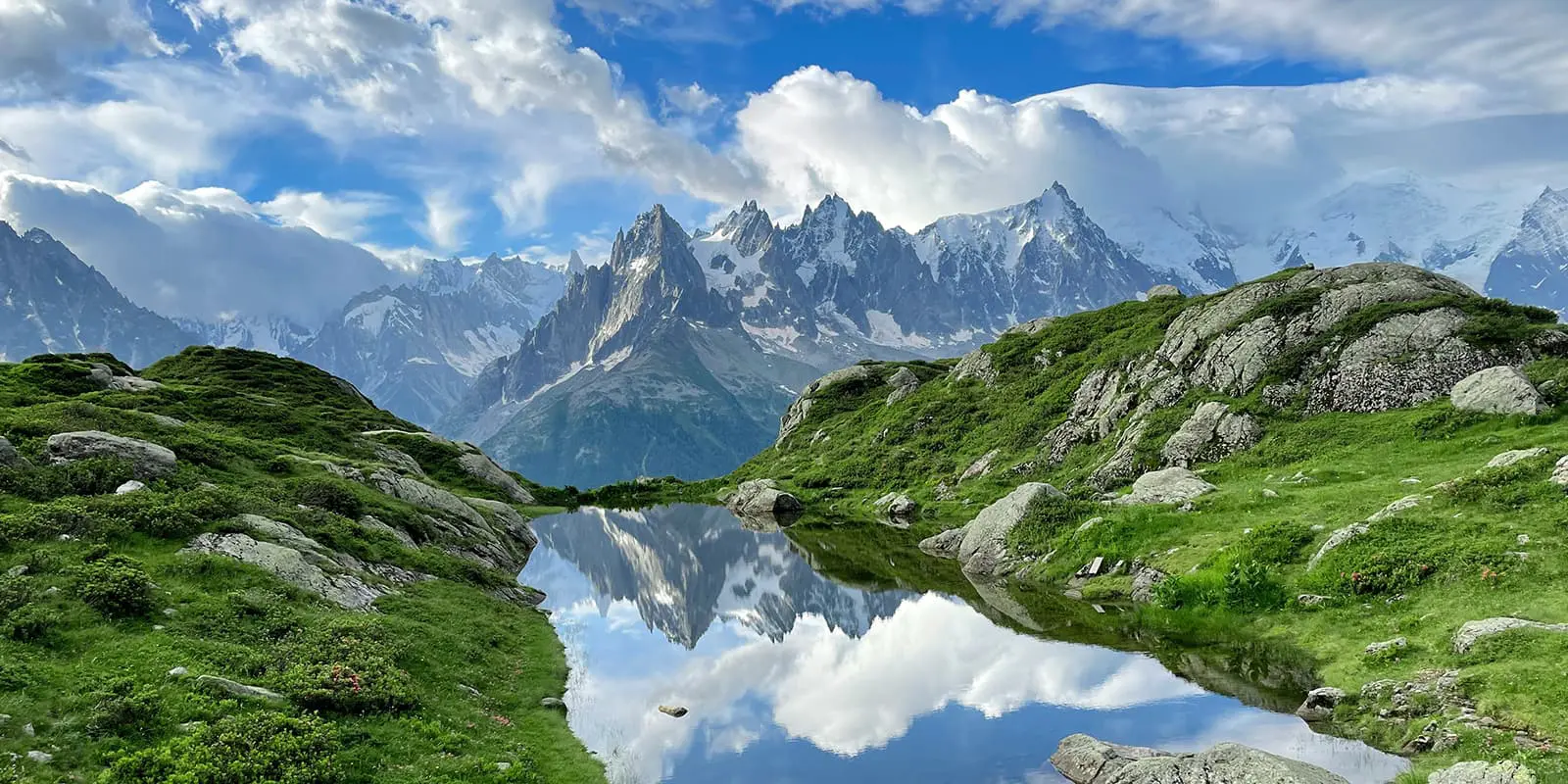On stage 2, you’ll hike to Estanquinhos, where you’ll rise out of the forest and levadas to hike more on plateaus near the end. You’ll pass some incredible waterfalls and pass by Rabacal, a restaurant and boutique hotel. Around this area, it will get quite busy since people can drive to this spot, but have patience. The crowds will dissipate once you leave Rabacal and you’ll be back to solitude. You’ll also need a permit for the Estanquinhos campground. These are also quite limited, but there are a few more spaces than Fanal.
On stage 3, you’ll go through some of the famous Madeira tunnels on your way to Encumeada. These are over a kilometer long and were built originally for the levadas to go through the mountain. That means that you’ll be walking on a narrow path next to them, so make sure your pack doesn’t have much hanging off the sides! Note that you will need a headlamp for these tunnels. This day also has a lot of descent, so be prepared. Take it slow and you’ll be okay because when you climb again, you’ll see the most amazing ridge views. This stage ends at the Encumeada Valley View Hotel where you can enjoy a shower after two nights of camping.
The 4th stage to Pico Ruivo is some serious climbing. You’ll ascend about 1400m as you climb almost to the top of this famous peak. You’ll likely want to save the actual summit for sunrise the next morning (when it’s the most magical), so you can go straight to your campsite or the mountain hut when you get there, depending on where you booked. They’re both extremely close to the peak, so you won’t be going out of your way for either of them.
The 5th stage is arguably the most famous hike on the island. This is the PR1 between Pico Ruivo and Pico Areiro. Many people do this as a day hike, so be ready to be patient and greet people from all around the world, especially in the high season from May through September. You’ll want to start early to pop up to Pico Ruivo for sunrise, then you’ll head down and start walking to Pico Areiro. The PR1 is about a 6-kilometer section against the cliffs, where you’ll end up in a line of people climbing stairs and ladders to go between the two peaks. However, don’t be discouraged. While there will be an influx of people, it’s for good reason. This section is beautiful, with clear views of the island and valleys below for almost the entire 6 kilometers.
When you get to the top of Pico Areiro, there’s a restaurant and cafe next to a road, where most folks will take a bus or taxi back down. That means that the trail will be clear (we saw no one) from here to Ribeiro Frio, where you’ll sleep that night. There are quite a few restaurants near the campsite, so there are a lot of amenities available to you there. But the nice thing is the campsite is far enough from the village that you should only hear the sound of the waterfall as you sleep, no cars. You also could book a hotel here if you prefer instead of camping.
Finally, stage 6 will take you to Machico, the end of the hike. This is a long day, so get up early, have a big breakfast, and get moving! You’ll descend a lot on this stage but will have one of the nicest stretches of the trail as well. As you near Machico, you’ll begin to walk along a cliff, with the ocean to your right, for about 10 kilometers. Talk about a dream! You’ll see the waves crashing below you and have a few spots to stop for a break to soak in the views. The path is wide enough for groups to pass each other, so it shouldn’t be a problem for people with a mild fear of heights.
Finally, you’ll arrive at Machico and end the trail at the beach to end your Madeira Crossing and you’ve thru-hiked the island. From here, you can take a bus to wherever you’d like to sleep that night. Machico has some lovely options by the water, or you can go back to Funchal on a 45-minute public bus if you prefer the larger city at the end of your Madeira thru-hike.
The great news is the Madeira Crossing is opening up again in April 2026, as it was closed for trail restoration after wild fires in 2024. This is very exciting! After a year and a half of re-routing by the ocean with much more elevation gain, the PR1 and Madeira Crossing will open again.
You can follow @_thru_hiking on Instagram for the most up-to-date information on the trail reopening.




